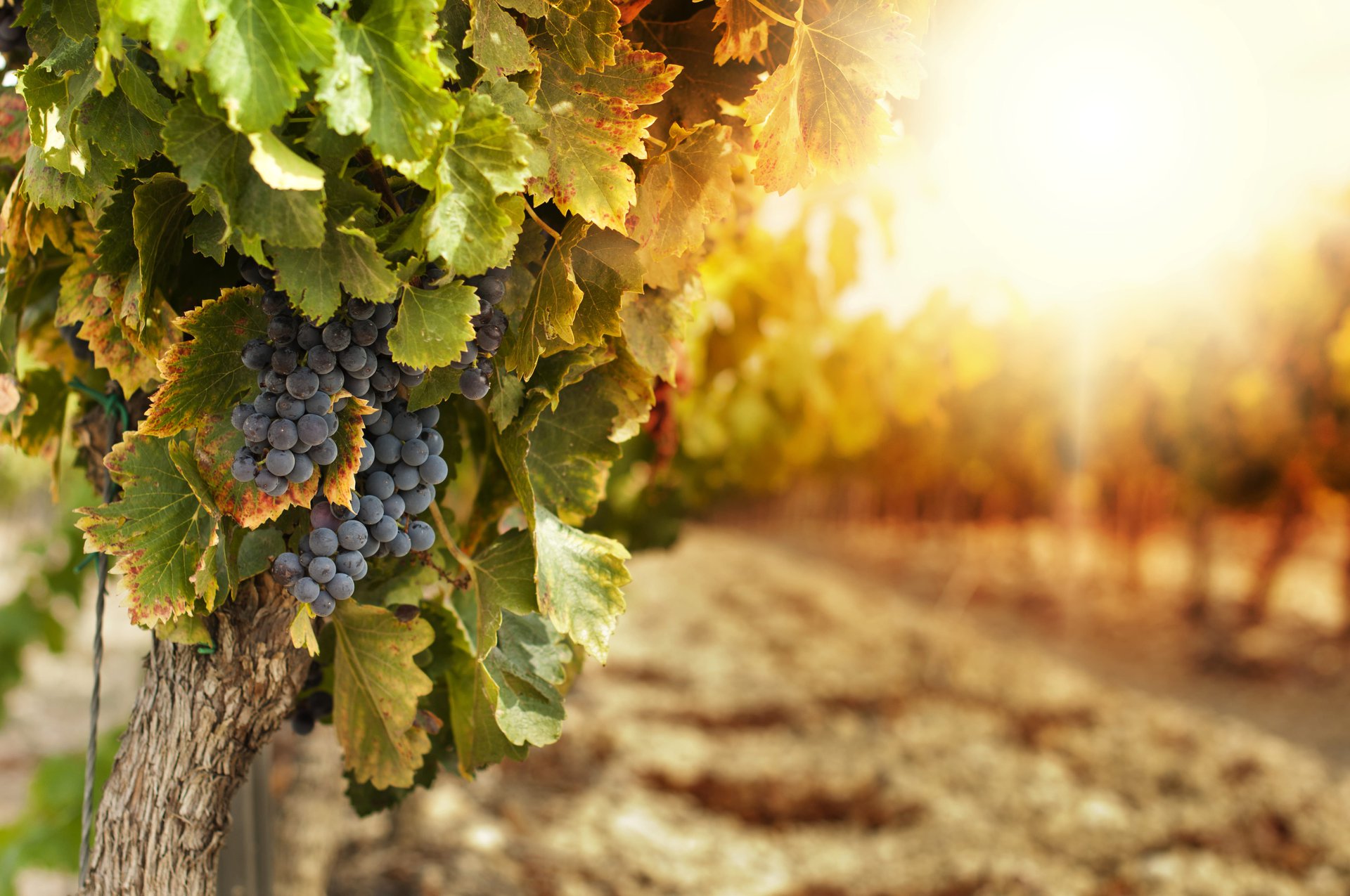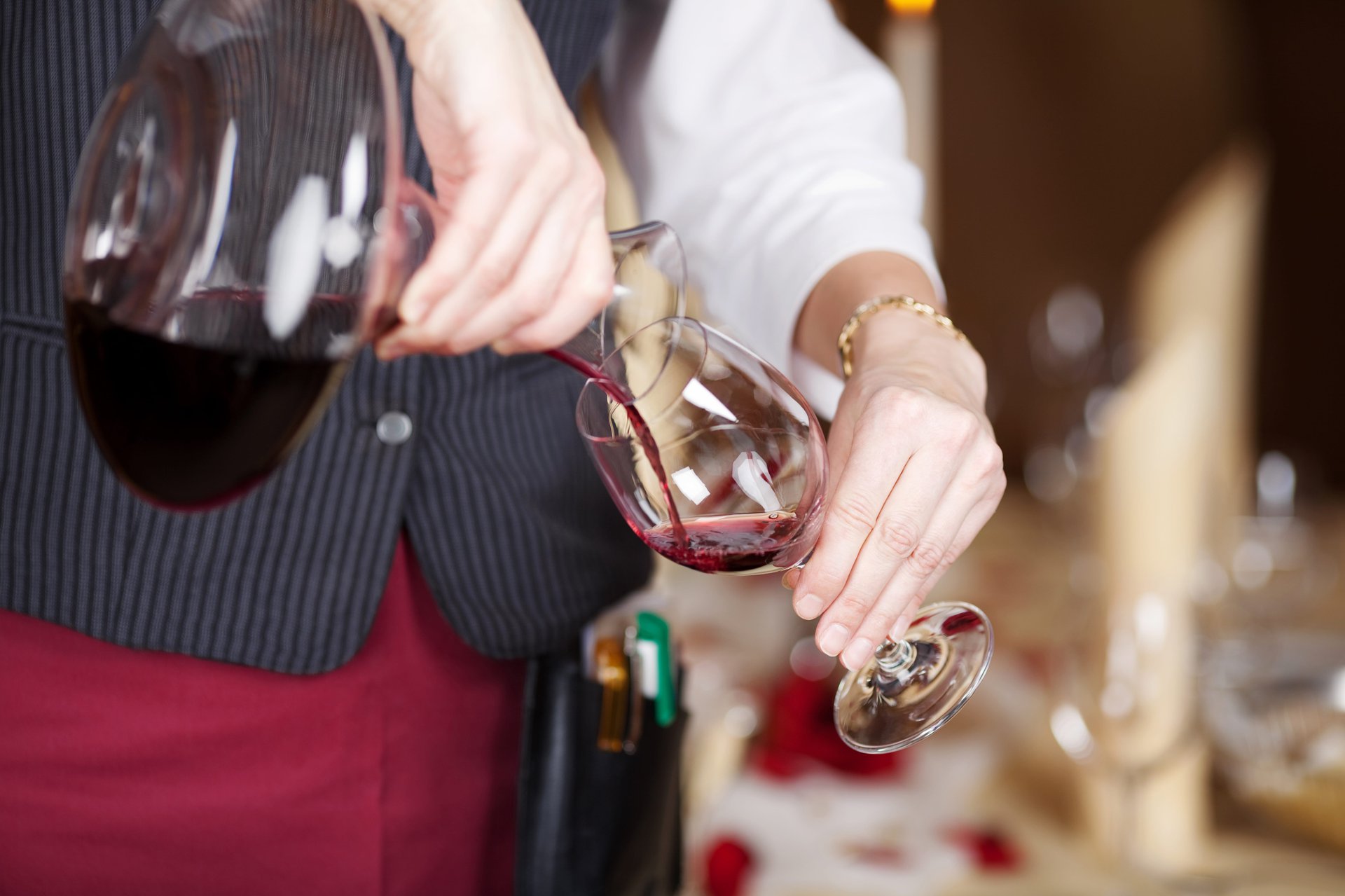-
White Wine
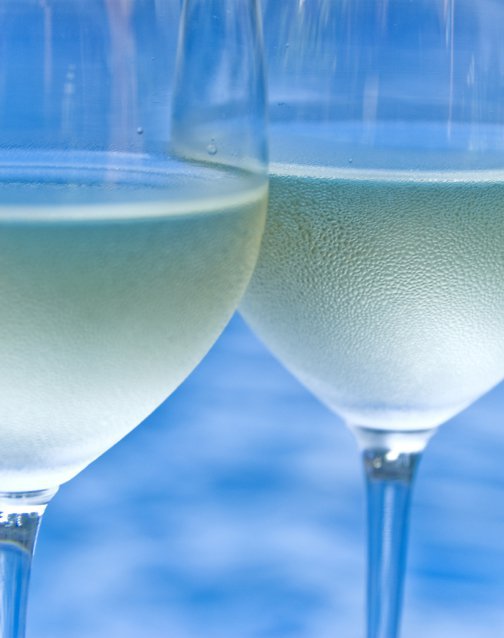
White Wine
Light, refreshing, fruity whites
-
Characteristics
The cool, hilly, verdant north west of Portugal is the main source of a unique style of white wine with lowest alcohol and high, fresh acidity: Vinho Verde (vinho verde, ‘green wine’, and means ‘young wine’). Many also have a slight prickle of fizz, once a remnant of the carbon dioxide of fermentation, now often added at bottling time. Vinho Verde may be made from numerous grape varieties, some aromatic, some not, often a selection blended together. It may be dry or medium-dry.
-
When and how to drink
All of these are wines to drink young, ideally from the latest vintage. Vinho Verde and other light, fresh wines are by definition ideal in summer. Whatever time of year, they make refreshing aperitifs, are perfect with salads (balancing the acidity of the dressing), good with seafood and fish, and a foil for fatty foods or dishes. Try them also with Thai or other South East Asian cuisines.
Full-bodied whites
-
Characteristics
Higher in alcohol and richer in texture, these come from vineyards bathed in copious sun and high summer temperatures. There are soft, rich wines from the Alentejo, intense, minerally whites from the Douro, and full-bodied whites from Trás-os-Montes in the north east. Portugal has the advantage of numerous indigenous grape varieties that are able to keep their acidity in hot climates, and including these in a blend provides balancing freshness for rich white wines.
-
When and how to drink
Full-bodied whites may be further enriched by fermentation in oak, which adds more fullness and texture, and/or maturation in oak, which may give richness and gentle oaky flavours, or sometimes dominant oak flavour. The oak-ageing of top-of-range Reserve whites from Dão and Lisboa (and occasionally elsewhere) rounds them out to full-bodied status. These are all wines for correspondingly bigger food flavours and richer food. Wine with very obviously oaky flavours are harder to match well with food in general, but they can be a good match for smoked foods.
-
-
Rosé Wine
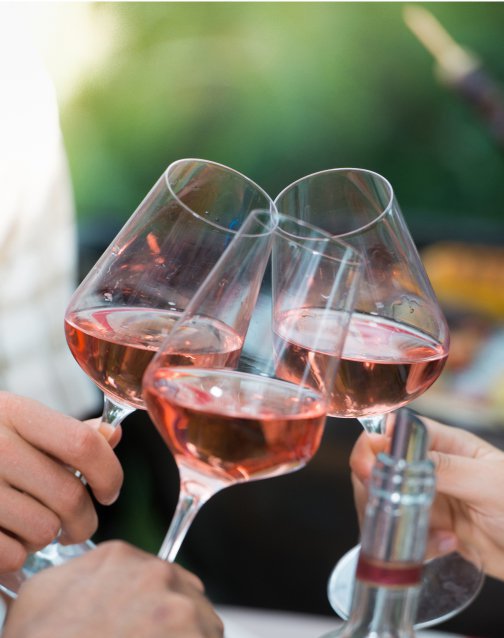
Rosé Wine
-
Characteristics
Like white wines, rosés tend to have crisper acidity, lower alcohol and lighter body when grown in cooler places, which means places with maritime influence or high altitude. There’s not really a particular geographical place in Portugal that is famous for making rosés – although as far as drinking is concerned, rosé is predominantly a seaside wine, also much exported. Every imaginable red grape, Portuguese and foreign, is made into rosé.
-
When and how to drink
Lovely, fruity and fresh alternatives to crisp dry whites, most rosés slip down all too easily and you might do well to choose your beach or summer barbecue bottle from the lower end of the alcohol scale. Dry, fruity rosés are good with a whole array of light-flavoured food, including sushi, vegetable and salad dishes, thanks to their gentle (even if consciously imperceptible) sweetness.
-
-
Red Wine
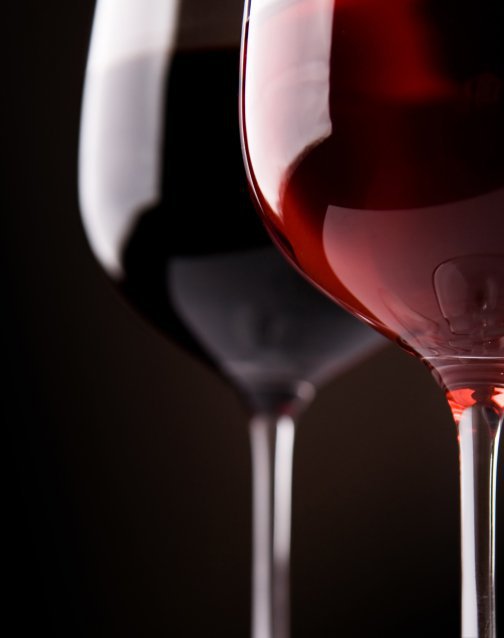
Red Wine
Light-bodied, tangy, fruity reds
-
Characteristics
The vineyards along Portugal’s windy Atlantic coast (the ones that make light, fresh, fruity whites) also make some of their reds in a similar light, tangy style, with alcohol typically nowadays around 11%. This includes the cool, often rainy Vinho Verde region in the north west. To people outside Portugal it’s a fairly well-kept secret that around 40% of all Vinho Verde is red, its deep red colour, unusual for such a cool region, coming partly from the red flesh of the local Vinhão grapes, as well as their skins.
-
When and how to drink
Red Vinho Verde goes well with freshly-grilled sardines, and with the often rich or fatty meats, offal and charcuterie that are popular in these parts. It tends to come in a tall, lean bottle, like white Vinho Verde. Give it a try! If it won’t come to you, you may need to take a trip to the North West.
Rich, round, full-bodied reds
-
Characteristics
Alentejo hot summers make ripening easy, and sweet grapes mean rich fruit and lots of body. Alentejo reds are made from a variable blend of grape varieties, including Trincadeira and Aragonez, Alicante Bouschet and Syrah, Touriga Nacional and Cabernet Sauvignon. They may be inexpensive, rich, round and full, or very expensive, even richer, dense, and oak-aged, but still with a certain opulence and easy-drinking charm. Occasional other red wines from elsewhere in Portugal also fall into this rich, ripe style, from the upper reaches of the Douro, or the Tejo, for example.
-
When and how to drink
Relatively low tannin makes these wines quite easy to pair with food, but the food flavours need to be equally big if they are not to be overcome by the wine. Game, lamb, beef, pork, offal, charcuterie, plainly cooked meats or richly sauced meats, all can work well with this style of red wine. Ripe Touriga Nacional (so long as it is not too heavily oaked) is particularly wonderful with beef, as is Aragonez with lamb, especially lamb flavoured with thyme.
Robust reds
-
Characteristics
The Douro Valley is the most reliable source for this style of red wine. Serious, big and often firmly tannic in their first few years of life, top Douro reds nevertheless have their own robust style of elegance, and often a complexity of flavour that comes from the mix of grapes, sometimes “vineyard blends” where old vines of mixed varieties are planted together. These are wines that age and develop well, their tannins softening, their fruit mellowing. The higher the price, the more you might expect them to repay ageing – but this can only be a generalization. Trás-os-Montes is the wine region to the north of the Douro Valley, also mountainous, growing the same grapes and also making big, robust reds. Another source of firm, robust reds is Bairrada. In good, hot vintages, red Bairrada made from the traditional Baga grape has full body as well as high acid and tannin, maturing to a softer, complex, savoury, malty wine of great originality.
-
When and how to drink
Robust reds are a fine match also in summer for game, meats, and offal. The tannin of young robust wines seems softer and easier with meats cooked in stews, especially when red wine is an ingredient. Both Douro/Trás-os-Montes wines and Bairrada Baga make good matches with certain cheeses; both are, surprisingly, delicious with fresh, curdy goat’s cheese.
Elegant reds
-
Characteristics
Dão has perhaps the greatest concentration in Portugal of elegant reds; altitude is high, the soils granite, the climate cool, ripening slow. Fine-quality Touriga Nacional is blended with Tinta Roriz, Alfrocheiro, Jaen and other grapes to make intensely-flavoured, perfumed reds with good acidity and lovely balance. The red wines of Palmela on the Península de Setúbal can be elegant, made from the Castelão grape, which is difficult elsewhere but able in the sandy soils of the Setúbal Peninsula to ripen well and give reds wines with complex, fruity flavours, good acidity and balanced tannins, ageing to a cedary character not unlike that of mature Cabernet Sauvignon.
-
When and how to drink
These are versatile wines, fine at any time of year, good to drink by themselves, and easy with a range of food, from poultry to red meats to cheese.
-
-
Sparkling Wine

Sparkling Wine
-
Characteristics
As sparkling wines need high acidity, they are made, unsurprisingly, in the cooler areas of the country. Bairrada sparkling wine has a fine reputation, made from quick-pressed red Baga or Touriga Nacional grapes, fragrant white Maria Gomes, Arinto, Bical and sometimes nowadays Chardonnay. Cool, high-altitude Távora-Varosa, south of the Douro, north of Dão, makes sparkling wines from the Malvasia Fina and, increasingly, the Champagne grapes Chardonnay and Pinot Noir. Vinho Verde, where many wines have just a prickle of fizz, added fully sparkling wines to its regulations just in time for the Millennium.
-
When and how to drink
Refreshing in the heat of summer, and cheering in the cold of winter, sparking wine is perfect for fish and seafood. Sparkling wines are an ideal choice for dressed salads, the acidity and slight sweetness matching the dressing as well as the sweetness of the salad and vegetable ingredients. The natural sweetness of vegetable dishes often also fits well with the sweet edge of sparkling wines.
-
-
Port Wine
The Port Wine is divided into three big families, White, Tawny and Ruby, being the first made from white grapes and the other two, from red grapes. The White Port offers a range of colors that can vary from pale white to amber. The Ruby family admits red tonality that extends from light red, to very dark red, almost black. The tawny family usually extends from colors like auburn, copper and amber.Read more about the Port Wine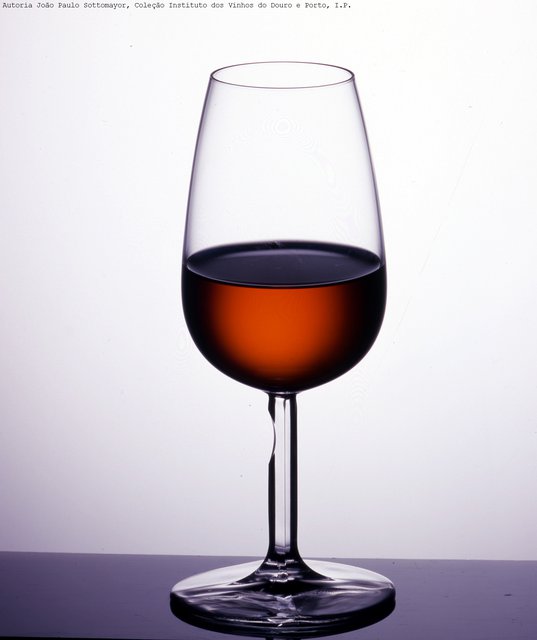
Port Wine
Read more about the Port WineThe Port Wine is divided into three big families, White, Tawny and Ruby, being the first made from white grapes and the other two, from red grapes. The White Port offers a range of colors that can vary from pale white to amber. The Ruby family admits red tonality that extends from light red, to very dark red, almost black. The tawny family usually extends from colors like auburn, copper and amber.White
-
Characteristics
White ports come in various levels of sweetness. Seco (dry) is actually quite sweet, meio seco (medium dry) pretty sweet, and doce a drink for the seriously sweet of tooth. A new style of port, sweet, fortified and rosé, this is made to drink chilled and neat, or in cocktails.
-
When and how to drink
White Ports are drunk as an aperitif, sometimes mixed with tonic, neat on ice, or in cocktails. There are also more expensive, longer-wood-aged versions with a nuttier flavour, also best chilled and served as an aperitif.
Tawny
-
Characteristics
Tawnies are amber-coloured to brown, and nutty-dried-fruit-figgy in flavour thanks to years of slow, controlled oxidation in large wooden barrels or vats. They go by two names, either Colheita (specifying a vintage) or Aged Tawny (with a number of decades declared on the label, from 10 to 40 years). Aged tawny is leaner and more spirit the more decades it declares.
-
When and how to drink
Colheitas and Aged Tawnies are best served chilled, summer or winter. They might be an aperitif, or drunk at the end of the meal, perhaps with walnuts to nibble. 10 or 20-year-old are the best of all ports for Stilton, and delicious with Portugal’s star cheese, Queijo Serra da Estrela.
Ruby
-
Characteristics
Ruby Ports, where the Vintage port is the other top-end style, are redder, firmer, slightly sweeter and fruitier than tawny. You can really taste the sweet ripeness of the hot sun of the Douro Valley in this style of port. In years of old, vintage port had to be kept for years for its tough tannin and spirit to soften to drinkability. Now the spirit used to fortify port is of finer quality, and modern methods in vineyard, cellar and warehouse make vintage port a more balanced, less tannic wine that is drinkable after only a few years, although it will still age and develop complexity. There are numerous more modest categories, like Crusted, Late-Bottled Vintage (LBV), Late Bottled, Reserve, Premium Ruby and Ruby.
-
When and how to drink
Ruby is best drunk at cool room temperature, and is good with certain cheeses, Queijo Serra da Estrela, Queijo de Azeitão, Cheddar, even strong, unpasteurized Brie in the case of LBV. They are also a good match with bitter chocolate or coffee desserts. The French drink this style of port as an aperitif, the English after the meal – take your pick.
-
-
Madeira Wine
Read more about the Madeira Wine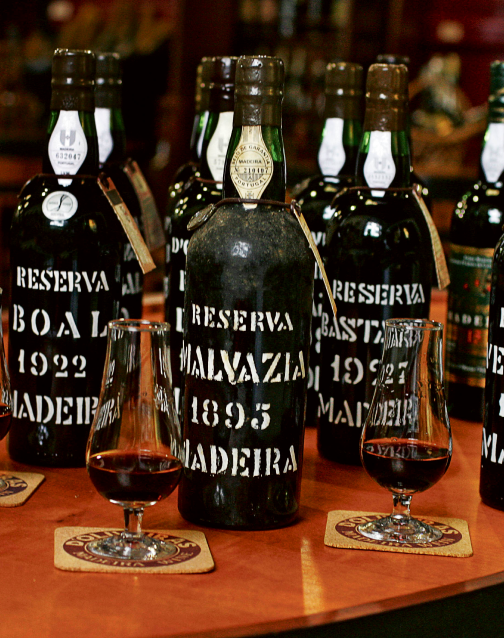
Madeira Wine
Read more about the Madeira Wine-
Characteristics
All Madeira Wine has a nutty, deliberately oxidized and slightly caramelized quality from wood-ageing under the influence of heat. Madeira Wine ranges in sweetness from just off-dry to seriously sweet. Very little is made nowadays of the traditional wines, named after their grape varieties and traditionally made each at its own individual level of sweetness. In rising order of sweetness, these are: Sercial, Terrantez, Verdelho, Boal and Malvasia. All these are white grapes. The red variety, Tinta Negra, is now made into all the sweetness levels, by the same heating/oxidative methods. It is still possible to buy extraordinary bottles of intensely-flavoured, really complex old wines made from the old white varieties.
-
When and how to drink
Blue cheese is often a good partner: Malmsey or Boal with Roquefort, for example, or Boal or Verdelho with Stilton. Old Boal with the caramelly-cooked Scandinavian cheese Gjetost is one of the world’s most perfect (if obscure) food and wine pairings! Most Madeira Wine, however, is probably drunk to round off a meal, with nuts and dried fruits, or just by itself.
-
-
Moscatel Wine
Read more about the Moscatel Wine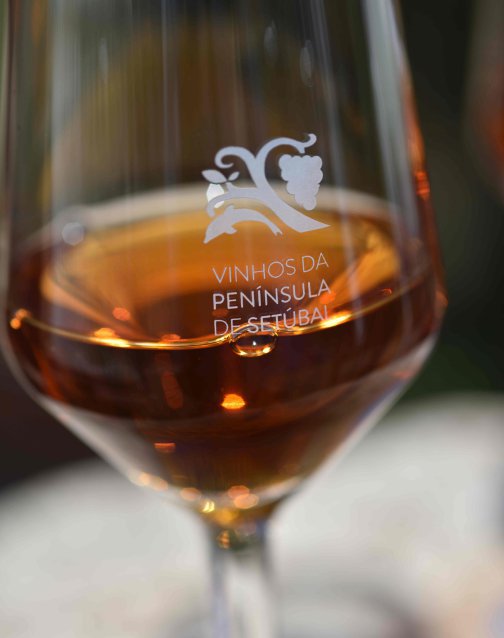
Moscatel Wine
Read more about the Moscatel Wine-
Characteristics
Moscatel grapes are turned into sweet, fortified wine in the Douro and, most famously, the Peninsula de Setúbal region. Most fortified Moscatel is sold young and fruity, but with age it develops nuttier, figgy flavours that go brilliantly with English Christmas Pudding and mince pies, or at the end of the meal with nuts and preserved fruits. Sweet, fortified Setúbal wines are labeled simply Setúbal if they contain less than 85% of Moscatel, Moscatel de Setúbal or Moscatel Roxo (a rare and slightly different grape) if they have more.
-
When and how to drink
Sweet, fortified Moscatel’s flavours of orange, lemon, flowers and grapes are brilliant matches for many desserts and puddings – sweet dishes flavoured with citrus fruits, coffee, chocolate, hazelnut, almond, rice pudding, crème brûlée, crème caramel and all those moreish, super-sweet egg-and sugar concoctions the Portuguese make to perfection. Sweet, fortified Moscatel is also best choice for Pavlova, and other meringue-based desserts.
-
-
Pico and Biscoitos
Pico and Biscoitos
-
Characteristics
The traditional fortified wines of the Azores are in short supply these days and mostly drunk on the spot, in the middle of the Atlantic Ocean. Not all are fortified - if the grapes naturally reach the minimum potential alcohol of 16% the wines may be left unfortified. They are made from Verdelho, Arinto and Terrantez, given a long, slow oxidative maturation in wood. Like Madeira, Pico and Biscoitos have marked, tangy acidity, and concentrated, nutty flavours. They may be dry, medium or sweet.
-
When and how to drink
Pico and Biscoitos might drink them chilled as an aperitif, with cheese, or with nuts and other nibbles at the end of a meal.
-
Wine Styles
Portuguese Wines
Wine Styles
Wine Styles
The vast quantity of native grape varieties (more than 250) allows the production of a great diversity of wines with very distinct personalities.

